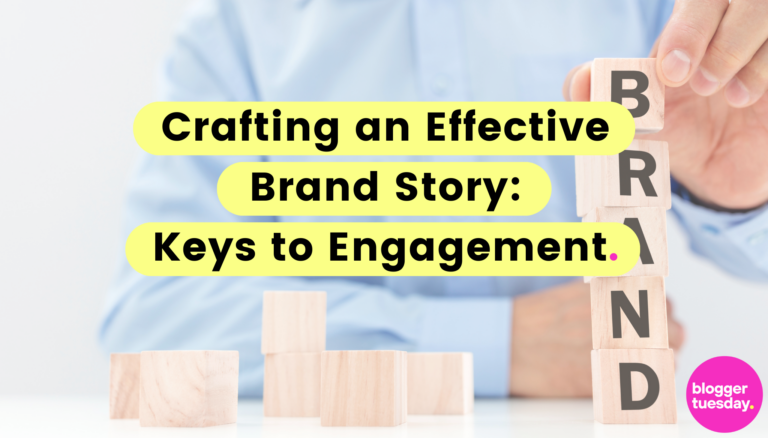No matter how good a product or service is, without effective branding, your business can get lost in a saturated market. In highly competitive sectors it is essential to build a compelling brand story to ensure that you engage with your audience on a deeper level. Effective branding can also help your potential customers identify with and advocate for your products. Here’s how to create a brand story that drives engagement.
Understand Who You Are Marketing To
An estimated 93% of all online experiences go through a search engine. That means that you’ll only get successful conversions to your site if you are matching the search criteria of your desired customer base. It’s essential to understand who your target audience is before you tell your brand story.
Understand who you are marketing to by identifying your target audience:
- Analyse your direct competitors and who they are marketing to
- Use Google Analytics to identify current traffic and who is currently visiting your site
- Decide who you want to appeal to
- Conduct interviews and market research with panels and your existing customer base.
Once you have some data on your target audience, build up user personas in order to establish what drives the people that purchase your products or services. How can you meet their needs? Look at their demographics, online behaviours, and most importantly what their challenges might be.
Establish The Purpose Of Your Brand
Your brand’s effectiveness depends on whether it has a clear purpose. What are your business values? Why does your brand exist? Identify the common blockers of your target audience and align your business and products with a higher purpose.
Some key questions to ask yourself might include:
What Problem Does My Product Solve?
Go back to your target audience and see what challenges or preferences they have. How does your business or product help them achieve those preferences or overcome those obstacles?
What Motivates My Target Audience?
What higher purpose will motivate your target audience? How can your product help you match your branding to this purpose authentically?
What Makes Your Brand Unique?
What would make your target audience select your product over a competitor? What will make them want to use your product again?
Once you’ve established the main purpose of your products, and how it matches your target audience, you’re ready to start telling your brand story.
Creating An Authentic Story
The key to effectiveness with your brand story is to make it authentic and genuine. Be honest with your brand’s development, the key milestones and successes of your business. Share your failures along with your triumphs. Being honest with your audience will make you seem human, and can also help your customers learn how you got where you are today.
Within that authenticity, it’s time to tell a good story. Set up the following storytelling devices to ensure your brand narrative is compelling:
- The hero – who is the hero of your brand story. Is it the brand itself, your customers, a social cause, or someone that is integral to your brand?
- The villain – the villain are the conflicts or challenges that your audience has, and which your product aims to overcome. Go back to the problem your target audience is trying to solve.
- The happy ending – fast forward to the end of the story. How will your brand provide solutions, make them happy, or make a difference?
- The journey – take your audience on a journey. How will the hero overcome the villain and achieve that happy ending?
Once you’re clear on the story of your brand, it’s time to get that story across your communications, your content, and your platforms.
Consistency Is Key
Once you’re clear on your audience drivers, your brand’s purpose, and that all important brand narrative, it’s time to be consistent with that message across every content-piece you deliver to potential customers:
Content
Every piece of content you offer, be it long- or short- form engaging blog posts, videos, or infographics, must be consistently delivering the brand story. Use your story to deliver value-added content to your target audience and always ask if the content’s key takeaway helps the audience overcome their obstacle.
Social Media
Your social media channels can be used to amplify your brand message. Remember that social media relies heavily on short-form content and audience engagement. Create a consistent voice in your social media channels and leverage that to share your other content.
Customer Service
Nearly 80% of customers back out of a purchase due to a poor customer experience. That experience can be made even more negative if one of your brand values is treating your customers well. Ensure that the way you treat your customers is consistent and professional.
Brand Voice & Tone
Is your brand cheeky? A source of authority? How does your content read? However you choose to write your content, make sure it’s consistent. Ensure that fun or tongue-in-cheek branding is always professional and polite when talking to customers, even when responding to bad reviews.
Engage With Your Audience
It’s not enough to tell your brand story, it’s critical to engage with the audience that’s reading it. Proactively respond to posts, reviews and customer feedback. Use your brand story to overcome a challenge that a negative review poses and deliver results for the customer. Customer engagement can help drive brand loyalty and help you develop authentic communications with your customers.
Final Thoughts
Your brand story matters. It can help you differentiate yourself from your competition, and relate to your chosen target audience. Truly evaluating what your audience cares about will increase your brand effectiveness and your engagement with the target audience. Use data about your customer base to ask key questions about your brand’s purpose and how it can help your audience. Draft this into a compelling story, and ensure this messaging is consistent and resonates across all content and platforms.


